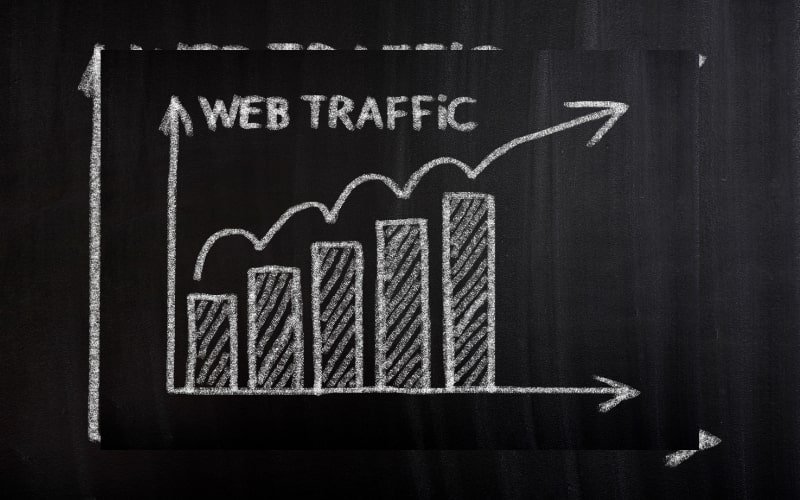When it comes to search engine optimization (SEO), the work doesn’t stop after implementing your strategy. SEO is an ongoing process that requires continuous tracking, analysis, and refinement to maintain and improve rankings, organic traffic, and conversions. For local service-based businesses, tracking and analyzing results is crucial for sustaining long-term success. Without monitoring performance, you won’t know if your SEO efforts are paying off or where to focus for future improvements.
This article explores the key metrics local businesses should track and how analyzing these results can help refine an SEO strategy for ongoing growth.
Measuring Organic Traffic Growth

An increase in organic traffic is one of the clearest indicators of SEO success. Organic traffic represents the visitors who find your website through unpaid search engine results, making it a crucial metric for evaluating the effectiveness of your SEO strategy. By analyzing organic traffic growth over time, businesses can determine how well their website ranks for target keywords and how effectively it meets the needs of users.
Why Organic Traffic Growth is a Key Indicator of SEO Success
Organic traffic is vital because it reflects the true impact of your SEO efforts. Unlike paid traffic, which relies on advertising budgets, organic traffic comes from high-quality, relevant content that aligns with search engine algorithms. When your website experiences consistent growth in organic traffic, it signals that your SEO strategy is working effectively to attract and engage users.
Tracking this growth offers several benefits:
- It shows how well your site ranks for target keywords.
- It reflects your ability to capture user intent through relevant content.
- It directly contributes to conversions by attracting qualified leads.
This makes measuring organic traffic growth an indispensable part of achieving SEO success.
Tools for Tracking Organic Traffic
Google Analytics is one of the most powerful tools for monitoring organic traffic growth. It offers detailed insights into user behavior, helping businesses understand how visitors interact with their site. By using Google Analytics, you can:
- Monitor Traffic Sources: Identify how many visitors come from search engines like Google, Bing, and Yahoo.
- Analyze User Behavior: Track metrics such as page views, session duration, and bounce rates to understand how users engage with your content.
- Compare Traffic Over Time: Evaluate organic traffic growth by comparing data across different time periods. This helps businesses measure the effectiveness of their SEO campaigns and ensure continuous SEO success.
For example, if your website’s organic traffic has increased by 30% over the past quarter, it’s a clear sign that your SEO efforts are paying off.
How Organic Traffic Growth Drives Business Results
Tracking organic traffic growth isn’t just about measuring numbers—it directly impacts business outcomes. When a local business implemented a robust SEO strategy, it saw steady growth in organic traffic. This increase translated into more leads and sales as visitors discovered the business through relevant search queries. Such results highlight the connection between organic traffic growth and SEO success.
By optimizing for targeted keywords, creating high-quality content, and improving site performance, businesses can attract users who are actively searching for their products or services. This process not only enhances visibility in search engines but also builds trust with potential customers, leading to long-term growth.
Leveraging Organic Traffic Growth for SEO Success
The ability to measure and analyze organic traffic growth empowers businesses to refine their strategies continuously. Regularly monitoring this metric ensures that your efforts align with search engine updates and user expectations. Whether you’re optimizing content, improving site speed, or earning backlinks, a steady rise in organic traffic is a strong indication of SEO success.
To sustain this success, businesses should focus on:
- Publishing content that answers user queries.
- Optimizing on-page SEO elements like title tags and meta descriptions.
- Building high-quality backlinks to improve domain authority.
When combined, these efforts create a robust foundation for driving organic traffic, maintaining visibility, and achieving long-term SEO success
Tracking Keyword Rankings for Local Search
![]()
For local businesses, maintaining a strong presence in search engine results is vital for attracting customers within their community. Keyword rankings play a central role in this effort, serving as a benchmark for how well a website is performing in local search results. Monitoring and optimizing these rankings over time is key to achieving SEO success, as it ensures the business remains visible and competitive in its market.
The Importance of Tracking Keyword Rankings
Tracking keyword rankings allows local businesses to evaluate their SEO efforts and make data-driven decisions. Understanding how target keywords are performing provides insights into what is working and what needs adjustment. For instance, a local bakery might aim to rank for keywords like “fresh pastries near me” or “artisan bread in [city].” By analyzing the performance of these keywords, the business can ensure that its website remains prominent in search results, driving consistent traffic and customer inquiries.
Moreover, keyword tracking offers a clear view of how SEO adjustments impact rankings. Regularly analyzing these metrics helps businesses determine whether recent changes, such as updating meta tags or improving page load speed, are contributing to SEO success or require further refinement.
Tools for Tracking Keyword Rankings
Several tools are available to help businesses monitor their keyword rankings effectively. These tools provide valuable data on individual keyword performance and overall visibility in search engine results:
- Google Search Console:
A free tool that provides detailed information on keyword impressions, clicks, and rankings. It is an excellent starting point for tracking keyword performance and identifying opportunities for improvement. - SEMrush and Ahrefs:
Paid tools like SEMrush and Ahrefs offer advanced keyword tracking features, such as competitive analysis and local search insights. These platforms are ideal for businesses aiming for long-term SEO success by staying ahead of competitors. - Local Rank Trackers:
Tools specifically designed for local businesses, such as BrightLocal and Whitespark, focus on tracking keyword performance within specific geographic areas. This is particularly valuable for businesses with hyper-localized services.
By leveraging these tools, businesses can identify which keywords are driving traffic, evaluate changes in rankings, and take action to improve visibility.
Optimizing for Local Search with Long-Tail Keywords
Long-tail keywords with local intent are a powerful way to achieve SEO success in competitive markets. Phrases such as “emergency plumber in [city]” or “best coffee shop in [neighborhood]” reflect the specific needs of potential customers. These keywords not only attract highly targeted traffic but also increase the likelihood of conversions.
For example, a local florist targeting keywords like “wedding bouquets in [city]” can position itself as the go-to provider for local customers. Consistently ranking for these terms leads to increased visibility, customer trust, and, ultimately, more inquiries and sales.
The Competitive Advantage of Regular Monitoring
In today’s dynamic digital landscape, local businesses must regularly track their keyword rankings to maintain a competitive edge. Competitors are constantly updating their strategies, and search engine algorithms frequently change. Regular monitoring allows businesses to adapt quickly, ensuring sustained SEO success.
For instance, if a competitor begins to outrank a local HVAC company for “24-hour HVAC repair in [city],” timely keyword tracking can alert the company to update its content or adjust its strategy to reclaim the top spot. This proactive approach is essential for maintaining visibility and relevance.
Analyzing Conversion Rates

Attracting traffic is just one part of the equation; conversions are the ultimate goal of any SEO campaign. Conversions can refer to a variety of actions depending on the business’s goals, such as filling out a contact form, scheduling an appointment, making a phone call, or purchasing a service.
By analyzing conversion rates, the business can determine whether the increase in organic traffic is translating into actual leads or sales. Google Analytics offers powerful tools for tracking conversions, such as setting up Goals to monitor specific actions users take on the website.
For this local business, tracking conversion rates revealed which pages and keywords were driving the most leads. The business also identified which areas needed improvement, such as optimizing landing pages with clear calls to action (CTAs) or adding more localized content to attract users further down the sales funnel.
Conclusion
Tracking and analyzing SEO results is essential for sustained SEO success in local search. By closely monitoring organic traffic, keyword rankings, and conversion rates, businesses can understand the effectiveness of their SEO efforts and make informed decisions for ongoing improvement. SEO is a dynamic field, and by consistently refining strategies based on real-time data, businesses can continue to grow their online presence, attract local customers, and achieve long-term SEO success. Staying proactive ensures that businesses remain competitive and achieve lasting SEO success.
